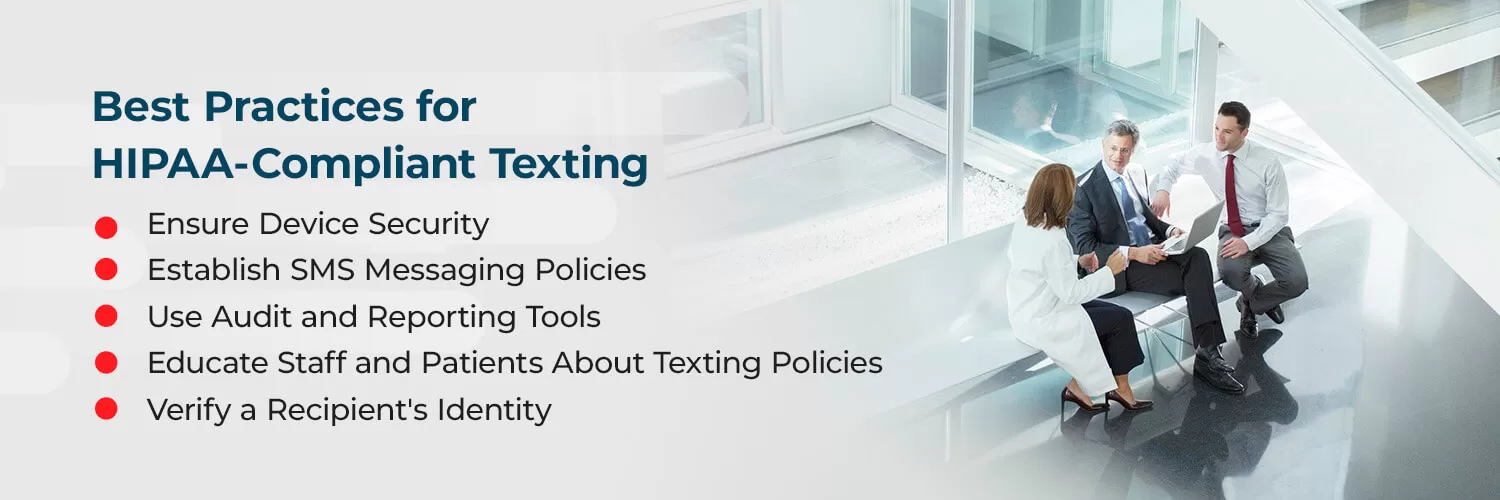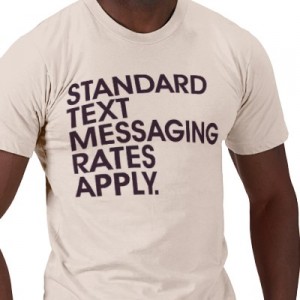More healthcare providers are using text messaging, or short message service (SMS), along with other technologies to engage with patients and communicate with staff. Text messaging is a quick, efficient way for providers to directly remind patients of upcoming appointments or medication refills to help them remember important dates and times. Providers can also use SMS messaging to keep staff on the same page about work-related subjects.
If your healthcare facility is considering using text messaging to engage with patients and staff, you should be aware of rules from the Health Insurance Portability and Accountability Act (HIPAA) that may affect how you send text messages. HIPAA works to minimize the risks of using SMS messaging in the healthcare industry by outlining specific regulations for protecting protected health information (PHI). Learn more about SMS HIPAA compliance and how to ensure your business meets the requirements.
How SMS Messaging Can Improve the Patient Experience
SMS messaging can be a powerful tool in the healthcare industry. Texting can help improve communication with your patients and increase their loyalty to your facility. Consider the many ways SMS enhances the customer experience for patients:
1. Remind Patients of Appointments
Giving patients the option to receive text notifications about their care is a great way to improve their experience with your facility. For example, text messages reach recipients directly and may be more prioritized than emails. Many patients appreciate the immediacy of a text message and find it helpful for remembering appointments and medication refills.
2. Re-engage Patients
You can also use SMS to engage with patients who previously received care from your facility and haven’t opted out of your messages. Whether you’re reminding someone to schedule an annual exam or using SMS messaging to request patients reschedule their visit after a no-show, texting is a great way to reopen the patient-provider relationship.
3. Increases Communication Between Providers and Patients
Text messaging can also improve and increase communication between doctors and patients. Communicating about prescription status through SMS optimizes your patients’ and team’s schedules. Allowing patients to confirm, reschedule or cancel appointments through text streamlines the appointment process. Providers can also send instructions for follow-up care and request bill payment through text. When patients can communicate about appointments, prescriptions and other aspects of care through SMS, they don’t have to spend as long on the phone with your facility and are more in control of their care.
HIPAA Regulations That Affect Healthcare Providers and SMS Messaging
As a healthcare provider, you must comply with HIPAA regulations about protecting PHI. Consider how these rules may affect how you use SMS messaging to communicate with patients:
Privacy Rule
The use and disclosure of patient PHI are addressed in the HIPAA Privacy Rule. The Privacy Rule ensures patients can understand and control how their information is used and provides guidelines for protecting patients’ privacy. This rule applies to a wide range of entities, including:
- Healthcare providers
- Health plans
- Business associates
- Healthcare clearinghouses
Security Rule
The protection of any PHI transmitted in electronic form is addressed in the HIPAA Security Rule. The Security Rule thus applies specifically to text messages. Covered entities must put measures in place to ensure the electronic transmission of PHI is confidential and maintains data integrity.
The Security Rule also specifies that covered entities are responsible for safeguarding electronic PHI against threats, impermissible uses or disclosures of PHI and detecting potential threats as they arise.
HITECH Breach Notification Rule
Another significant regulation for healthcare providers considering using SMS messaging is the Health Information Technology for Economic and Clinical Health (HITECH) Act. The HITECH Act sets requirements for covered entities to promptly notify the Department of Health and Human Services and individuals affected by a breach of PHI. The breach notification rule places increased responsibility on healthcare providers to safeguard patient information properly.
Best Practices for HIPAA-Compliant Texting
Maintaining HIPAA-compliant SMS messaging is critical for protecting sensitive patient information, adhering to government regulations and building patient trust. While ensuring HIPAA-compliant texting may seem like a monumental task, you can implement some strategies to make it easier.
The following best practices can help your facility achieve HIPAA compliance with a texting feature:
1. Ensure Device Security
Whether you send SMS messages from your web browser or use Gmail to compose texts, securing your devices is an essential step in ensuring HIPAA-compliant SMS. Any device used to send or receive SMS messages containing PHI must be safeguarded from potential misuse to prevent the unauthorized disclosure of patient information.
Develop a policy for ensuring device security, such as having devices at your facility that may only be used for work-related activities or encrypting devices that will be used for SMS messaging. All devices used for sending SMS messages should be password protected.
2. Establish SMS Messaging Policies
Your facility also needs a firm policy about who can access patient information and send SMS messages. The policy should address what types of patient information may be shared via text, who can access the data to send the messages and how they must send them. Here are a few factors to address in your text messaging policy:
- Trackable user IDs: Create unique user identification numbers to track who accesses PHI and restrict access to certain types of information.
- Emergency access credentials: Define what may be considered an emergency and who will be allowed emergency access to PHI.
- Message encryption: Invest in messaging encryption to prevent unauthorized use of or access to PHI.
3. Use Audit and Reporting Tools
Assessing the access and use of PHI helps healthcare providers measure risk and increase data security. Each covered entity is responsible for determining what controls and tools are needed to protect patient information adequately.
A helpful strategy for ensuring HIPAA-compliant texting is implementing SMS messaging auditing and reporting tools. These tools log and generate reports on all user activities, including administrative access, providing a clear timeline of who accessed information and when. These tools let your team identify and mitigate any risks related to message access and technology security.
4. Educate Staff and Patients About Texting Policies
The technology you use to send SMS messages is critical to safeguarding PHI, but so is your facility’s staff. Staff members can pose a data risk if they don’t follow best practices for sending and receiving sensitive health data, compromising patient information and putting your facility at risk of non-compliance. Train your staff on your facility’s safe texting policies, such as what information to include in SMS messages and how to send them securely.
Educating patients about your facility’s SMS messaging policies is also critical. Patients have the right to know how your facility may use their information so they can consent to the policy. You may also want to inform patients about how you protect their data, which can build trust.
5. Verify a Recipient’s Identity
Before sending an SMS message containing PHI, verifying the recipient’s identity is vital. HIPAA requires healthcare providers to safeguard data to be inaccessible to unauthorized users. You don’t want texts containing PHI to be accidentally read by a patient’s coworkers or family members. Verifying the recipient’s identity is essential in keeping that information secure. Your facility can use SMS for two-factor authentication to confirm users’ identities before granting them access to PHI.
Implement SMS Messaging With Red Oxygen
Whether your healthcare facility wants to remind patients of upcoming appointments or improve communication between patients and providers, SMS messaging is an effective way to accomplish your goal. As you consider using SMS messaging to engage patients, complying with HIPAA patient health information regulations is crucial. Fortunately, there are multiple strategies you can take to safeguard patient data and streamline the care process.
Red Oxygen makes it easy to send text messages from a computer or browser to any patient device. With more than 20 years in the business SMS industry, Red Oxygen is a trusted expert in global messaging. To learn more about how our SMS messaging solution works with your existing infrastructure, contact our helpful support team or request a demo of our solution to see it in action.




















































